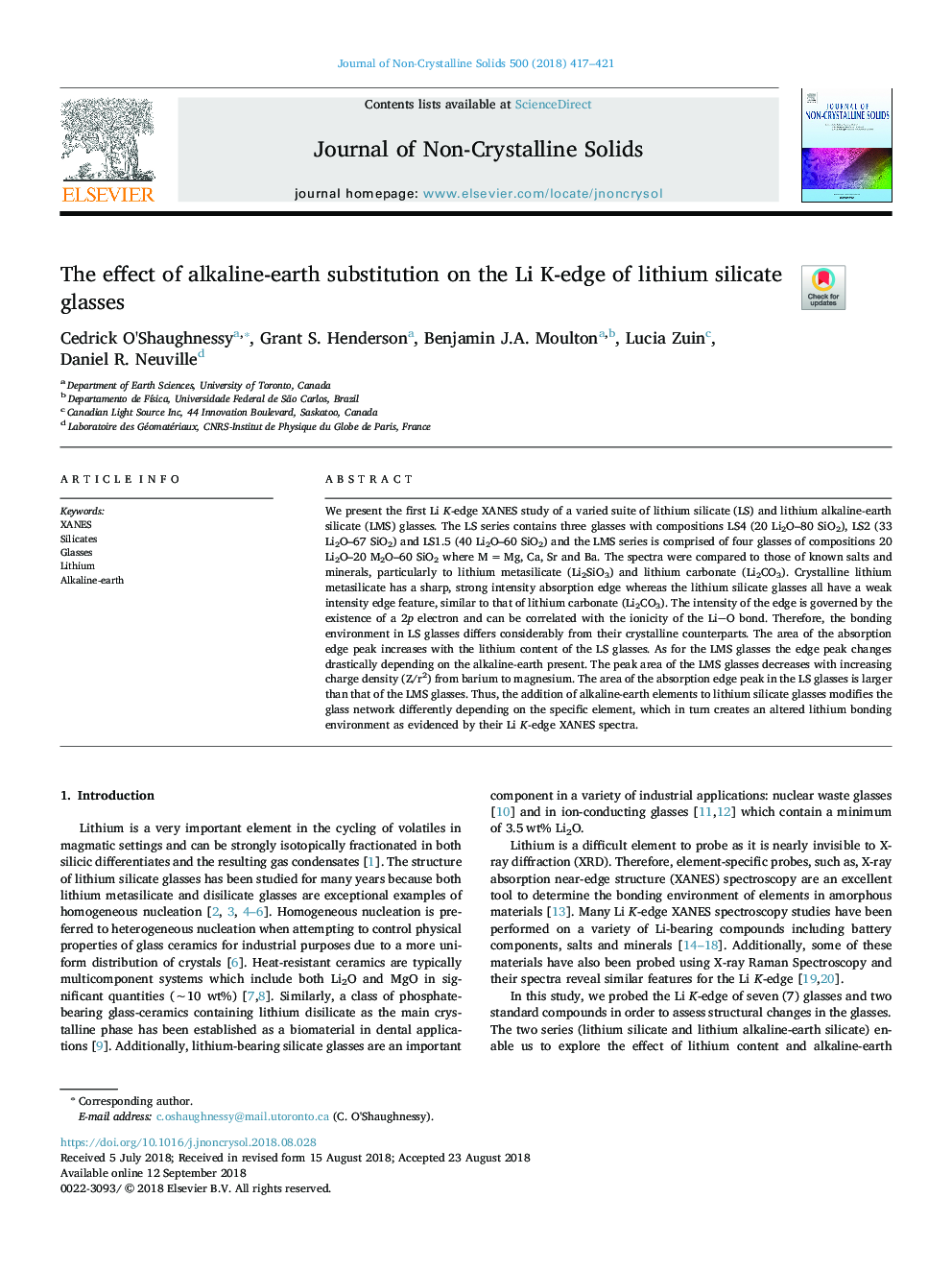| Article ID | Journal | Published Year | Pages | File Type |
|---|---|---|---|---|
| 10155572 | Journal of Non-Crystalline Solids | 2018 | 5 Pages |
Abstract
We present the first Li K-edge XANES study of a varied suite of lithium silicate (LS) and lithium alkaline-earth silicate (LMS) glasses. The LS series contains three glasses with compositions LS4 (20 Li2O-80 SiO2), LS2 (33 Li2O-67 SiO2) and LS1.5 (40 Li2O-60 SiO2) and the LMS series is comprised of four glasses of compositions 20 Li2O-20 M2O-60 SiO2 where Mâ¯=â¯Mg, Ca, Sr and Ba. The spectra were compared to those of known salts and minerals, particularly to lithium metasilicate (Li2SiO3) and lithium carbonate (Li2CO3). Crystalline lithium metasilicate has a sharp, strong intensity absorption edge whereas the lithium silicate glasses all have a weak intensity edge feature, similar to that of lithium carbonate (Li2CO3). The intensity of the edge is governed by the existence of a 2p electron and can be correlated with the ionicity of the LiO bond. Therefore, the bonding environment in LS glasses differs considerably from their crystalline counterparts. The area of the absorption edge peak increases with the lithium content of the LS glasses. As for the LMS glasses the edge peak changes drastically depending on the alkaline-earth present. The peak area of the LMS glasses decreases with increasing charge density (Z/r2) from barium to magnesium. The area of the absorption edge peak in the LS glasses is larger than that of the LMS glasses. Thus, the addition of alkaline-earth elements to lithium silicate glasses modifies the glass network differently depending on the specific element, which in turn creates an altered lithium bonding environment as evidenced by their Li K-edge XANES spectra.
Related Topics
Physical Sciences and Engineering
Materials Science
Ceramics and Composites
Authors
Cedrick O'Shaughnessy, Grant S. Henderson, Benjamin J.A. Moulton, Lucia Zuin, Daniel R. Neuville,
